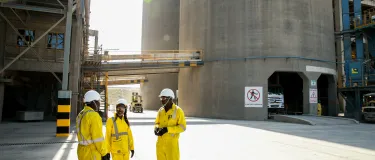The future of women in the construction sector
By Irene Wamanga
On March 8th, 2022 the world celebrated International Women’s Day whose theme was ‘Breakthebias’.
An apt theme given that a society that affords equal opportunities in all sectors is the only way to progressively move forward to inclusion and equal economic development. More and more we see workplaces and organizations take steps to ensure awareness of gender equality- the recent celebrations and events highlighting the annual International Women’s Day demonstrate a willingness to commit to changing mindset of the role of women in society.
Women in the construction sector worryingly low
Which is perhaps why it’s even more concerning that the presence of women in the construction sector remains worryingly low. Not only within Kenya but on a global scale, the impact of women in construction remains far behind sectors such as finance, banking and education. The construction industry continues to remain highly male-dominated at all levels- from the supply chain to the sites, the number of women participating as equal partners still reflects a bias that certain jobs and sectors remain the purview of men.
Now more than ever, the vibrant infrastructure projects space, and the booming real estate; shows a resilience within the economy. Research & Markets late last year indicates that the construction industry in the country will be on a constant growth at an annual average rate of 6.1% until the year 2025 and some research institutions say as high as 7%. These insights tally with those of another report released early this year by the Institute for Women’s Policy Research (IWPR) that indicates, globally the industry will need 62,000 new hires every month for the next three years to meet the growing house demand; there is a dire need for more construction workers going into the future and clear opportunities for investment.
And while many women have shown interest, and some pursued courses related to construction, the challenges from; recruitment, long and odd working hours, remote working locations and exclusive work practices, have meant that many have avoided joining or advancing their career in the industry. For too many women, the harassment and bias at site means that a career in construction becomes unattractive.
Gender balance a sensitive societal topic
Bringing about the desired change in the industry will start by acknowledging that gender balance remains a sensitive thing in our society. The traditional view that women do not belong on construction sites still remains firmly entrenched in our minds. The most common excuse being that women are not physically strong enough to participate on sites. This easy answer means that women have been locked out of jobs, even where carrying a 50kg bag of cement up 10 flights is not a requirement (and frankly should not be a requirement for anyone irrespective of whether they are a man or woman as its unsafe and physically harmful). But often even the practical life at a construction site can be challenging for women to navigate, more so when the representation of women on site is limited to administrative or support roles.
Even seasoned women in construction are underrepresented in senior management and board positions and preferred for roles ‘considered’ more suitable for women such as interior design while their male counterparts occupy site management and director roles which are perceived to be complex. In reality, the requirement to lay a brick, drive a truck or manage a site are the same for both men and women, the difference is a lack of opportunities and levelling of the playing field.
Breaking the bias with programs like Bamburi’s Women on Wheels
It begs the question therefore, what do we need to do. Support for organizations such as Buildher which trains women in construction is critical, as are initiatives such as Women on Wheels (founded by Bamburi Cement PLC) which is helping to break the bias and redefine the role of women in transport by training women truck drivers and providing them work opportunities. But without a steady inflow of girls and women enrolling in these programs, they will continue to be outliers in the sector.
Construction firms should take targeted steps to recruit and support the development of women in their organizations and sites. They need to ensure that women can work safely without intimidation and sexual harassment on their sites, provide welfare facilities such as changing and mothers rooms and toilets for women and decent working hours and conditions. Women need to be assured equal pay and recruitment opportunities if they are to seriously consider careers in construction.
We need to celebrate and highlight women who are breaking the barriers at all levels within the construction sector, so that the next generation of girls see construction as a viable career path, whether they choose to be driving the fork-lift or heading the Board.
Irene Wamanga is the People, Organization and Sustainability Director at Bamburi Cement.






